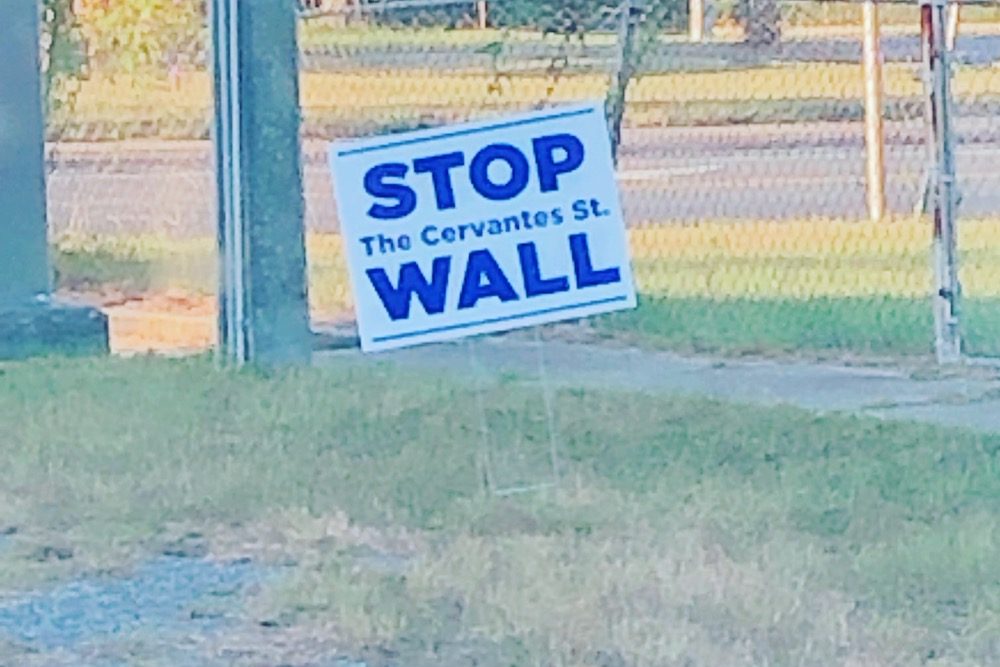PENSACOLA: The Florida Department of Transportation may be able to compromise on current plans to place a barrier wall down the middle of West Cervantes in an effort to improve pedestrian and vehicular safety on the perilous corridor near downtown Pensacola.
Jared Perdue, director of transportation for FDOT District 3, discussed the issue with members of the Pensacola City Council Thursday evening, following a meeting with Mayor Grover Robinson, who has been trying to get the state to reconsider the wall.
“You’ve heard it referred to as the barrier, the wall. We like to refer to it as decorative railing,†Perdue said. “It sounds positive, but it is what it is, it’s a separation.â€
In addition to the wall, FDOT’s safety improvements slated for West Cervantes include crosswalks, traffic signals and a narrowing of lanes. But the wall aspect has received the most attention, with residents and businesses along the route, as well as local governments, coming out in opposition to a concept they contend will cut off the street grid’s flow and impede both pedestrians and drivers trying to cross the street.
“We welcome that opposition. We welcome that feedback,†Perdue told city council. “We really do truly have a purpose to get as many members of the community involved as we can.â€
Up until yesterday, Mayor Robinson had not sounded too optimistic about getting FDOT to change course. City administration has met with the agency before, but on Thursday those discussions appear to have turned a corner.
“We actually today had a really good discussion with FDOT,†the mayor noted, explaining that the agency was “willing to work with us†on the wall.
Perdue agreed, describing the city as “very gracious†and “very collaborative,†with “a lot of excellent ideas.†He said that FDOT had “flexibility†where the wall was concerned, and that the state would be getting back to the city with alternative concepts, such as using landscaping and median to prevent crossing at undesignated crosswalks.
“We have a lot of flexibility with that,†Perdue said. “There’s other ways of channeling pedestrians, other ways that are more aesthetically pleasing.â€
Councilman P.C. Wu pointed Perdue towards Fletcher Avenue in Tampa, where he said FDOT accomplished its safety goals sans barrier. That route, he said, employed numerous crosswalks with flashing yellow crossing signals.
“They do not have a wall, but it has dramatically cut down on fatalities,†Wu said. “I think that would work very well here.â€
And Councilwoman Ann Hill wondered if FDOT might consider expanding the scope of the safety project to include the stretch of West Cervantes going through the North Hill area towards Palafox Street. She said that if funding were an issue, perhaps the city could tap some of the landscaping specific money stemming from FDOT’s bay bridge project.
“The main thing is that we would like it all tackled at the same time,†Hill said. “I would hope that you won’t just say, ‘we don’t have the money.’â€
“It’s certainly something that we can consider,†Perdue told her. “We never want to say no the first time you ask a question.â€
Councilman Jared Moore was interested in FDOT’s reasons for not leaving the street grid intact in the initial plans, allowing pedestrians and drivers to cross over at any given intersection: “What’s the rationale behind that?â€
Perdue said that FDOT’s primary objective is making the West Cervantes stretch safer. That means reducing traffic speeds and also reducing the “points of conflict†for pedestrians and drivers. The barrier, he said, is intended to reduce such conflict points by limiting crossing points.
“That’s the primary strategy for making it safer,†Perdue said of the conflict-point reduction. “If you don’t reduce them, the corridor does not get safer.â€
